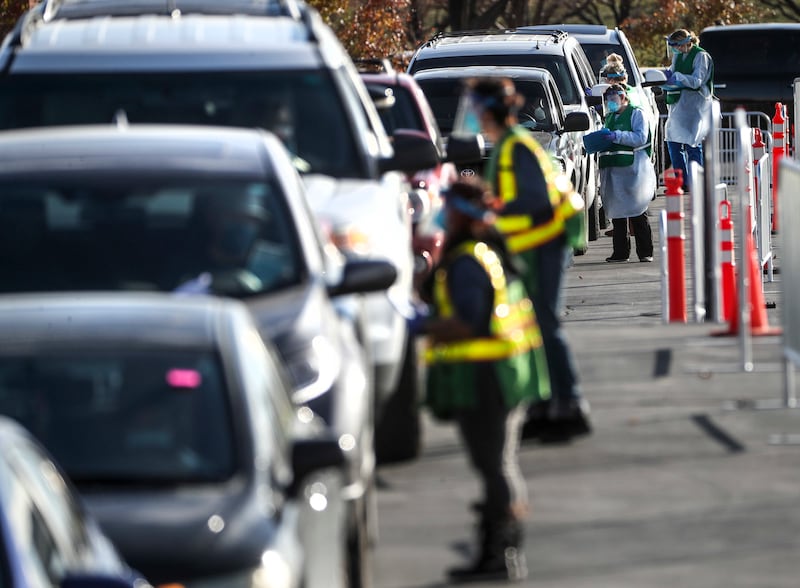Two vaccines from major pharmaceutical manufacturers are on their way to becoming approved by the FDA, and states throughout the U.S. are busily preparing distribution plans.
As Dr. Anthony Fauci said speaking to CNN on Tuesday, “Help is on the way.”
But that both Pfizer and Moderna Therapeutics seem mere months away from releasing their vaccines doesn’t mean all is well.
“The fact that we have a vaccine coming means we should double down and hang in there,” Fauci said.
Even if everything goes as planned, the majority of Utahns most likely won’t receive a vaccine until June or July. That’s more than half a year in which the coronavirus can continue to spread, not to mention first wading through winter months in which sickness easily multiplies.
In Utah, hospitals are nearing capacity, with 85% of beds currently being used. And with nearly 4,000 new cases of the coronavirus in Utah reported on Thursday, there could be major strains on the health care system should cases continue to rise. The state’s total number of infections since March exceeds 162,000, with a death toll of 756, according to reports from the health department.
We’re entering what may be the hardest months yet. But the next challenge may be greater: guiding people to take a vaccine.
A poll conducted by the Deseret News/Hinckley Institute of Politics in September found that nearly a quarter of Utahns said they would not take an FDA-approved COVID-19 vaccine if it were available. And nearly another quarter said they were unsure if they would take such a vaccine if made available.
Many more members of the community will need to be inoculated for the vaccine to truly defeat the virus. At least 60%-70% of the overall population would need to take the vaccine to really help inhibit the spread of the vaccine, according to Brian Poole, an assistant professor of microbiology and molecular biology at Brigham Young University.
However, there may yet be a silver lining. The poll was taken more than a month before the election at a time when many people had concerns the vaccines were being rushed or politicized. It was also a time when experts said they would have been happy with a vaccine success rate in the 60% range.
Now the country has the promise of two vaccines with a success rate of more than 90% in trials — a remarkable achievement. Couple that with the severity of recent spikes, and maybe Americans see why staying vigilant until a vaccine arrives, and taking it when it comes, is the best course of action.
But the virus doesn’t care about good news. It has no idea a vaccine exists. Utahns must carry on taking the simple measures of keeping themselves and their communities safe — wearing masks, social distancing, limiting gatherings and keeping to individual households.
Yes, it’s a sacrifice and, yes, it may last many more months. But when compared to the potential return of saving lives, it’s a small sacrifice to make. And sacrifice for a good cause is the American way.

